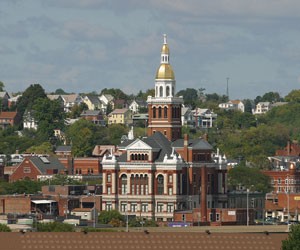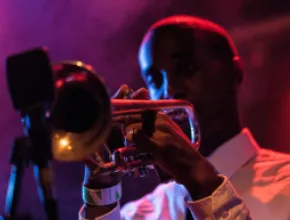At a certain level, Roy D. Buol, mayor of Dubuque, Iowa, is a victim of success.
Dubuque, a city of roughly 57,000 situated along the Mississippi River, has spent years methodically redeveloping its downtown and port areas. While residents tell Mayor Buol they’re pleased with their city’s new look and attractions—and with employers such as IBM and Hormel that want to hire dozens or hundreds of new workers even in the depths of a recession—that doesn’t mean they don’t have complaints.
“People now say, ‘I can’t find any place to park, I had to walk four blocks,’” the mayor recounts with a chuckle. “People want things in downtown—and then they complain when you have them, because everyone else wants them!”
Yes, pity the mayor of a friendly midsized city that has low crime, a low cost of living, public-private partnerships with multiple colleges and universities, a highly educated workforce and big employers that are actually hiring.
But in case the above factors don’t convince you to try Dubuque, Mayor Buol also mentions four “wow” places he likes to take visitors.
The first is Eagle Point Park, a longtime favorite sited on a bluff above Lock and Dam No. 11 on the Mississippi. The park offers tremendous vistas up and down the river from a series of pavilions inspired by architectural giant Frank Lloyd Wright.
A second place with great views is the Fenelon Place Elevator, which is actually America’s shortest, steepest railroad. It travels up a bluff to an overlook where visitors can gaze out at downtown and the Mississippi.
The mayor’s third “wow” is the ongoing, $188 million revitalization of the Port of Dubuque, which now features the National Mississippi River Museum and Aquarium and the new Diamond Jo Casino building, plus a conversion of the historic Dubuque Star Brewery into the Stone Cliff Winery (and accompanying piano bar).
“Downtown itself has a tremendous amount of historical preservation, not only on Main Street but the Victorian mansions that sit on the bluff overlooking downtown,” the mayor says.
But Dubuque didn’t just say, “Refurbish it and they will come,” as folks at the Field of Dreams in nearby Dyersville might put it; Dubuque has also invested in downtown cultural institutions that add to the city’s uniqueness, the mayor says.
“Our arts and cultural venues and groups are really thriving, and I think part of that is due to the fact that the city now provides some funding for their operating expenses. Also, the relative cost of living in the city is very good, and people certainly appreciate that.”
The local restaurant scene also seems to be thriving.
“Most restaurants are in the downtown area and a lot are in historically refurbished buildings. There’s the L. May Eatery, 180 Main, Jitters if you want a coffee bar, Houlihan’s, a new Tony Roma’s, and Salsa’s, when you want Mexican. There’s a lot of variety in one area, and it’s the area where most conventions take place.”
The mayor can be forgiven any bias about his fourth and final “wow” location: the Grand River Center, a conference and educational facility owned by the city.
“We have a lot of comments about that; people ask who owns it, and they’re surprised to hear that the city does,” Buol says.
One reason for visitors’ surprise is the dazzling River Room, which undoubtedly offers some of the area’s most spectacular views. With floor-to-ceiling windows, this space juts out over Dubuque’s River Walk and draws everyone’s attention out of the room and onto the water.






